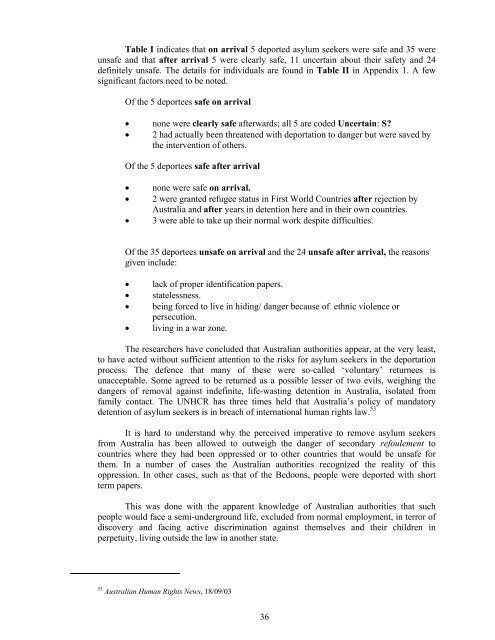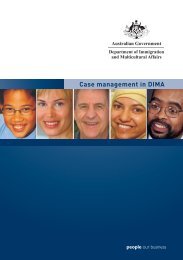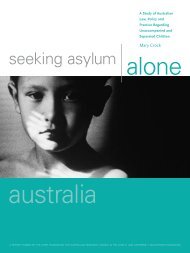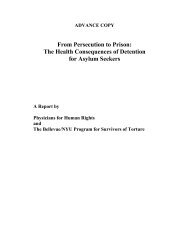DEPORTED TO DANGER - Edmund Rice Centre
DEPORTED TO DANGER - Edmund Rice Centre
DEPORTED TO DANGER - Edmund Rice Centre
You also want an ePaper? Increase the reach of your titles
YUMPU automatically turns print PDFs into web optimized ePapers that Google loves.
Table I indicates that on arrival 5 deported asylum seekers were safe and 35 wereunsafe and that after arrival 5 were clearly safe, 11 uncertain about their safety and 24definitely unsafe. The details for individuals are found in Table II in Appendix 1. A fewsignificant factors need to be noted.Of the 5 deportees safe on arrival• none were clearly safe afterwards; all 5 are coded Uncertain: S?• 2 had actually been threatened with deportation to danger but were saved bythe intervention of others.Of the 5 deportees safe after arrival• none were safe on arrival.• 2 were granted refugee status in First World Countries after rejection byAustralia and after years in detention here and in their own countries.• 3 were able to take up their normal work despite difficulties.Of the 35 deportees unsafe on arrival and the 24 unsafe after arrival, the reasonsgiven include:• lack of proper identification papers.• statelessness.• being forced to live in hiding/ danger because of ethnic violence orpersecution.• living in a war zone.The researchers have concluded that Australian authorities appear, at the very least,to have acted without sufficient attention to the risks for asylum seekers in the deportationprocess. The defence that many of these were so-called ‘voluntary’ returnees isunacceptable. Some agreed to be returned as a possible lesser of two evils, weighing thedangers of removal against indefinite, life-wasting detention in Australia, isolated fromfamily contact. The UNHCR has three times held that Australia’s policy of mandatorydetention of asylum seekers is in breach of international human rights law. 53It is hard to understand why the perceived imperative to remove asylum seekersfrom Australia has been allowed to outweigh the danger of secondary refoulement tocountries where they had been oppressed or to other countries that would be unsafe forthem. In a number of cases the Australian authorities recognized the reality of thisoppression. In other cases, such as that of the Bedoons, people were deported with shortterm papers.This was done with the apparent knowledge of Australian authorities that suchpeople would face a semi-underground life, excluded from normal employment, in terror ofdiscovery and facing active discrimination against themselves and their children inperpetuity, living outside the law in another state.53 Australian Human Rights News, 18/09/0336








